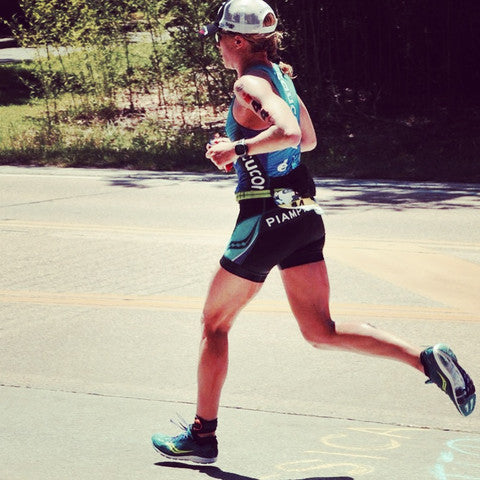Guest post by Sarah Piampiano, pro triathlete.
Most people purchase a PowerTap to help them reach new levels in their training. It is an amazing tool for that. Just like pacing on the track, or stroke rate in the pool, it can be a wonderful way to monitor progress and push you to reach higher thresholds. Similarly, power can also help you maximize what your body can offer during those sessions of high intensity when used as a tool to facilitate proper recovery during periods of active rest — a very critical component of training with power.
Using power in this capacity is an incredibly important part of my training protocol. I rely on my PowerTap hub and Joule GPS as a key indicator of my short-, medium-, and long-term progress in training. AND I also rely on it to help me maximize and gauge the quality of recovery sessions.

Taking time to recover pays off on race day.
It takes a lot of confidence to allow yourself to recover, and, I think as athletes, it can sometimes be as (mentally) challenging of a session to execute as the hard sessions where we are asking the most out of our bodies. We all like to go hard. Simply put. So NOT going hard can sometimes make the session not feel worthwhile or substantial. But those sessions are super important. Incredibly so. Recovery days are meant to be just that — recovery days. The purpose of them is to move blood and flush the system without hormonally taxing the body in any significant way. This allows critical waste that has built up to clear the system and sets the stage for your body to excel on harder days. If you go too hard in a recovery session, you don't allow your body to flush out the waste in the way that it is supposed to or receive much needed rest thus diminishing your recovery potential. Without it you risk the possibility of a less-than-ideal performance on the days when performing is important!
Since recovery sessions are sometimes hard, I like to use power to mediate my efforts. If I know I am supposed to be doing a super light flush or spin, I will often use power to ensure I keep the intensity way down. I know what wattages correspond to what efforts, and having those numbers in front of me ensures my effort levels are in line with the purpose of the day. For me — it has completely changed the way I approach recovery and helps me keep myself in check. There have been plenty of instances where my coach, Matt Dixon, has said "keep it really light today so you can go hard tomorrow" and instead of keeping my watts low, I've kept them at an endurance level. The result? My performance the next day sucked and I end up annoyed with myself and more tired than I should be. I failed myself. And I hate that!
Similarly, I use my PowerTap and power numbers as a great way to determine my recovery levels on days when effort levels are higher. I use perceived exertion, power and cadence combined to evaluate where I am at on any particular day. It can be a really fascinating to see how your power correlates to how you feel during a session.

Out on a training ride at St. George 70.3. - Photo credit: Jay Prashun
Recently I have been laid up with a stress fracture in my femur. In the coming weeks I will be allowed on the bike to do "non-weight bearing spinning" — i.e. light spinning. The purpose here is just to help with range of motion and getting my leg moving and the blood flowing. Like my recovery sessions I plan to use power. Will I go light? Of course I will, but here it is critical to my rehab that I don't over extend myself and keep my levels in check.
I will be using power during this time to ensure I am not over-exerting the bone and surrounding muscles in a way that could be detrimental to my recovery. Again — another example of how using power can be dynamic and play a great role in athletic progress.
When it's all said and done, using power as a training mechanism has so many different applications. It's not just about how much power you can put out; sometimes it's about how little power you can exert, and sometimes it is just about evaluating how recovered you are on a given day. My relationship with my PowerTap and Joule grows on a daily basis and I love finding new ways to use it in my training. Take the time to try it out on your next recovery ride!
Happy Riding!
Little Red

At the 2014 US Pro Championships in St. George Utah - Photo by Jay Prashun
Sarah Piampiano, aka Little Red, is a Maine-born kid who breathed sports from an early age. Following a 3-season collegiate career in ski racing and cross country running, she worked as an investment banker before competing in her first triathlon in 2009 after a bet with a friend. Since then she's made the journey from newbie triathlete to Ironman 70.3 Champion and one of the top athletes in the sport. You can follow her journey on Twitter @SarahPiampiano or via her website www.sarahpiampiano.com
